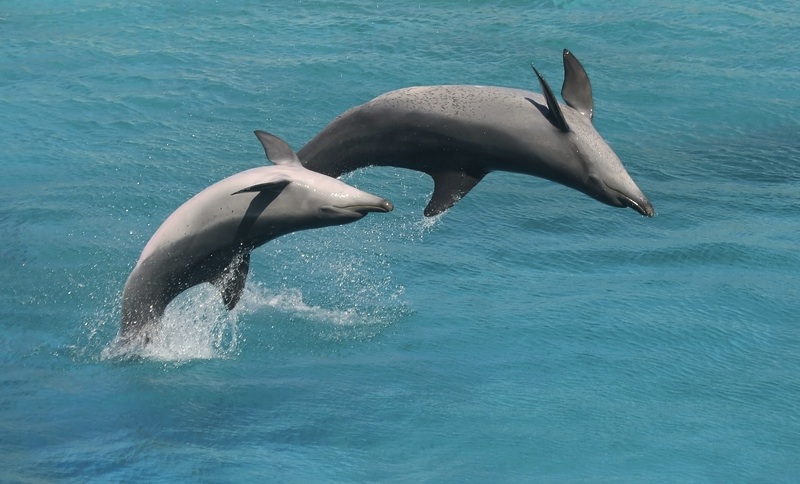Dolphin Genes Hold Clues to Animal Intelligence

Evolution-wise, bottlenose dolphins have left their mammalian brothers in the dust, and new research is showing what genes they changed to do it. These genes include those involved in brain and metabolism.
These changes could be why dolphins are known to be exceptionally smart, able to use tools, recognize themselves and even communicate with each other and with trainers.
"We are interested in what makes a big brain from a molecular perspective," study researcher Michael McGowen, of Wayne State University School of Medicine in Michigan, told LiveSCience. "We decided to look at genes in the dolphin genome to see if there are similarities in the genes that have changed on the dolphin lineage and those that have changed on the primate lineage."
The researchers compared about 10,000 genes from the bottlenose dolphin with nine other animals. (These included the cow, horse, dog, mouse, human, elephant, opossum, platypus and chicken — cows being the dolphin's closest relatives with a sequenced genome.)
By studying its mutations, they pinpointed which genes were "evolving" or what scientists call "being selected for" — genes that underwent changes and were passed on to future generations of dolphins — by comparing them to the analogous genes from the other species. If a dolphin gene has more protein-changing mutations than the cow version, for instance, that means it was actively evolving in the dolphin population at some time. [Animal Code: Our Favorite Genomes]
Brain changes
More than 200 of the genes in their survey were drastically changed in the dolphins. Twenty-seven of these were involved in the nervous system (like the brain and sensory organs). There were also many changes in the genes related to metabolism (similar to changes seen in primates), which McGowen said are important because, "brain tissue uses much more energy than other tissues."
Sign up for the Live Science daily newsletter now
Get the world’s most fascinating discoveries delivered straight to your inbox.
While we know these genes are associated with the brain, and this study says the genes are different in smarter animals, the researchers caution against linking them directly. Differences in the gene's "code" doesn't mean the gene actually acts any differently in the animal.
"We may not know exactly what they do yet even in humans or mice (the two most well-characterized mammals from a genetic perspective), much less dolphins; however, their function in the brain points to their importance," McGowen said. "Probably, changes in these genes could have led to the amazing cognitive capacity seen in dolphins — it definitely points in that direction."
Set apart
Unexpectedly, the researchers also saw that the dolphins were evolving more slowly than some of the other animals, a trait also seen in other mammals with big brains.
"Over time (since the split between dolphins and cows about 70 million years ago), we observe many more mutations or changes in the DNA along the cow branch (and indeed horse and dog branches) than we do along the dolphin branch," McGowen told LiveScience in an email. "This is exactly what we see in primates and elephants."
This is probably because these animals are using a different life-history approach — investing more in their offspring, but having fewer babies — which leads to slower evolution.
"It is striking that we see such similar molecular rates between all of these lineages and they have all such comparative large brains," McGowen said of the dolphins and primates.
The research is detailed in the June 27 issue of the journal Proceedings of the Royal Society B: Biological Sciences.
Follow Jennifer Welsh on Twitter @microbelover or LiveScience @livescience. We're also on Facebook & Google+.
Jennifer Welsh is a Connecticut-based science writer and editor and a regular contributor to Live Science. She also has several years of bench work in cancer research and anti-viral drug discovery under her belt. She has previously written for Science News, VerywellHealth, The Scientist, Discover Magazine, WIRED Science, and Business Insider.










